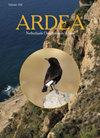欧洲视角下荷兰东Fryslân农业树篱景观中繁殖鸟类的主要生境因素——生态评估及其与农业环境方案的关系
IF 1.3
4区 生物学
Q3 ORNITHOLOGY
引用次数: 0
摘要
现代农业景观受到生物多样性丧失的严重影响。为了应对这种损失,重要的是要了解影响这些景观中生物多样性的关键因素。我们研究了繁殖鸟类与荷兰东Fryslân小规模树篱景观的栖息地特征之间的关系,这是一个典型的农业景观,正面临着规模扩大和栖息地退化的压力。我们质疑我们的发现是否与其他国家的绿篱研究结果相一致。我们还分析了农业环境计划对鸟类繁殖是否有效。在这项研究中,2018年在东Fryslân两个不同地区的170个样带上调查了繁殖鸟类和15个栖息地因素。鉴定出37种鸟类,其中19种为林地物种,18种为灌木物种,7种为灌木树篱专家。我们发现五个栖息地特征是繁殖鸟类数量的关键因素。其中四个因素是树篱的内在因素(即灌木覆盖率、荆棘和荨麻覆盖率、树冠宽度、底部树篱宽度)和一个空间因素(即150米半径内的树篱拐角数量,对应于树篱交叉点)。两个地区的四个关键因素相同,但不同因素和物种组的影响大小不同。作为栖息地数量(栖息地数量)的指标,东Fryslân树篱繁殖鸟类的内在关键因素与英国和东欧的因素一致,尽管树篱的植物组成、结构和管理存在很大差异。与对英国树篱的研究相反,我们主要发现了定量的关键因素,只有一个定性因素(荆棘和荨麻的覆盖)。我们发现了一个空间关键因素(树篱交叉点),并且鸟类数量与附近树篱密度没有相关性。我们讨论了与食物供应和育种有关的关键因素的生态学。我们还得出结论,农业环境计划有利于关键的栖息地因素,并通过这种灌木鸟类。我们的研究结果表明,传统管理有利于繁殖鸟类,但管理也应部分扩展。本文章由计算机程序翻译,如有差异,请以英文原文为准。
Key Habitat Factors of Breeding Birds in Agricultural Hedgerow Landscapes in East-Fryslân, the Netherlands, in European Perspective – Ecological Evaluation and Relation to Agri-Environmental Schemes
Modern agricultural landscapes suffer heavily from biodiversity loss. To counter this loss, it is important to understand the key factors that affect biodiversity in these landscapes. We studied the relationships between breeding birds and the habitat characteristics of the small-scale hedgerow landscapes of East-Fryslân, The Netherlands, a typical agricultural landscape that is under pressure from upscaling and habitat degradation. We questioned whether our findings collaborate the results of hedgerow studies from other countries. We also analysed whether agri-environmental schemes were effective for breeding birds. In this study, breeding birds and fifteen habitat factors were surveyed along 170 transects in two different regions in East-Fryslân in 2018. 37 bird species were identified, of which 19 were woodland species, 18 shrub species and 7 hedgerow specialists. We found five habitat characteristics to be key factors for breeding bird numbers. Four of these factors were intrinsic factors of the hedges (i.e. shrub cover, cover of brambles and nettles, crown width, hedge width at the base) and one spatial factor (i.e. number of hedge corners within a 150-m radius, corresponding to hedge intersections). Four key factors were the same for the two regions, but effect sizes differed between factors and species groups. As proxies for habitat volume (amount of habitat), the intrinsic key factors for hedgerow breeding birds in East-Fryslân correspond to those found in Britain and Eastern Europe, despite considerable differences in botanical composition, structure and management of the hedges. In contrast to studies on British hedges, we found mainly quantitative key factors and only one qualitative factor (cover of brambles and nettles). We found one spatial key factor (hedge intersections) and no correlation of bird numbers with density of hedges in the vicinity. We discuss the ecology of the key factors with respect to food provisioning and breeding. We also conclude that agri-environmental schemes favour key habitat factors and through this shrub birds. Implications of our findings are that traditional management favours breeding birds, but also that management should partly be extensified.
求助全文
通过发布文献求助,成功后即可免费获取论文全文。
去求助
来源期刊

Ardea
生物-鸟类学
CiteScore
2.10
自引率
0.00%
发文量
49
审稿时长
>12 weeks
期刊介绍:
Ardea is the scientific journal of the Netherlands Ornithologists'' Union, and is published since 1912. The journal welcomes manuscripts reporting significant new findings in ornithology, in particular those covering the ecology, life history, and evolution of birds, and including sound descriptive work. Ardea publishes Original research papers, Short notes and Book reviews. In addition to the regular three issues per year, Ardea publishes specials that contain conference or workshop proceedings (produced on request).
 求助内容:
求助内容: 应助结果提醒方式:
应助结果提醒方式:


